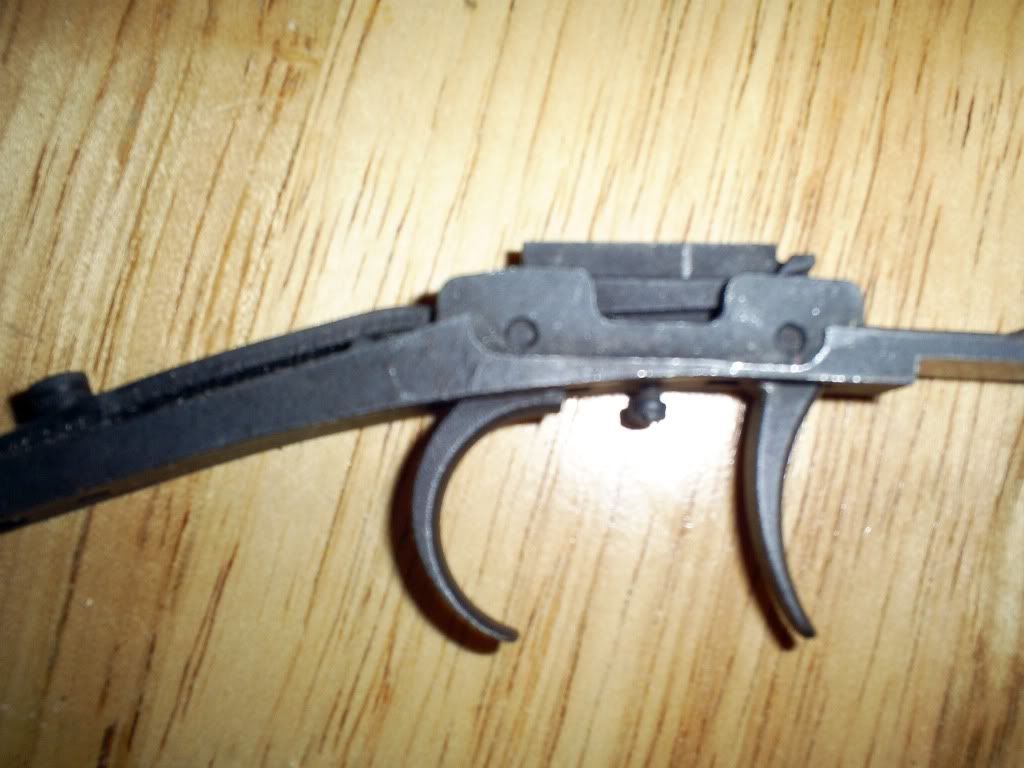Here's a slightly fuzzy pic of some triggers on a rifle I'm currently building. These are T/C triggers, but work the same as your Davis set.
The scratch mark on the front trigger bar is where it contacts the sear bar. I confirmed this by installing it and looking through the lock mortice. I tried to get a pic of it installed, but the flash caused some weird shadows. The adjustment screw is centered between the two trigger bars, and can be considered the equivalent of the "X" you were originally asking about. As can be seen, the contact point is in front of the center. This gives more leverage than if the contact were in the center of the trigger bar. Hence, a lighter trigger pull. But, like Maispring was implying, more leverage doesn't automatically mean getting the desired trigger pull. It sounds like he installed his Davis triggers as far back as he could, and he still had to fiddle with other things to get a light enough pull.
On this rifle, the front trigger does move back about 1/8" at the tip before it comes in contact with the sear, But I don't see that as a problem. The trigger creep I mentioned was the travel that happens after the trigger makes contact with the sear. Most guys only use the unset trigger when they are hunting, and don't notice the amount of movement before contact is made. It's mostly just aim and snap. I think they would notice it, however, if they had to really pull on that trigger to make the gun fire, even in the heat of buck fever.
I'm just like Mike Brines, I NEVER use the trigger unset, but I do build guns so that anyone can use them, set or unset. Plus, this particular rifle is for my daughter, who is unfamiliar with double set triggers, so I want it to work any way she feels comfortable shooting it. That's why I like to have the contact point just forward of center.
So, to answer your original question, If you're planning on using the triggers unset, I think you will be more satisfied if you install them so that the contact point is just foward of center, or forward of the "X".
I think you won't even notice the travel (if any)in the trigger before it makes contact.
I'm just saying how I do things. I hope this helps. Bill






